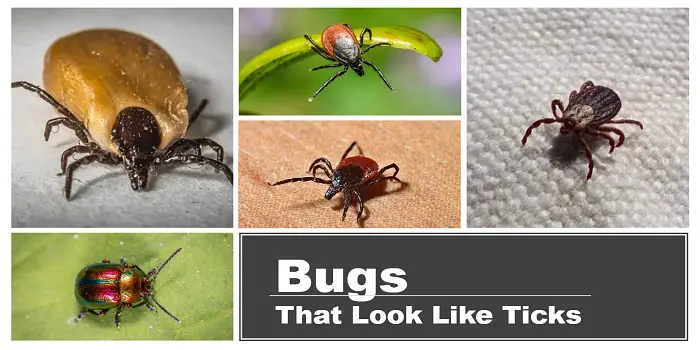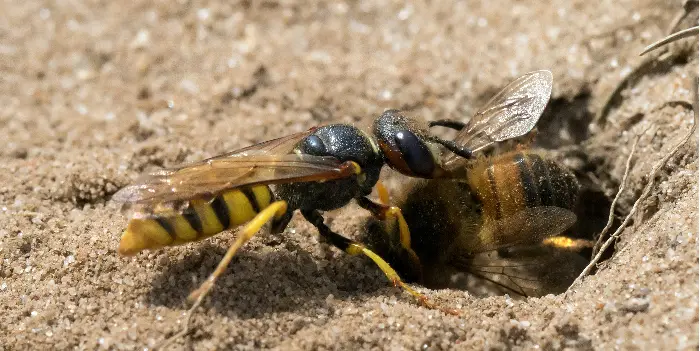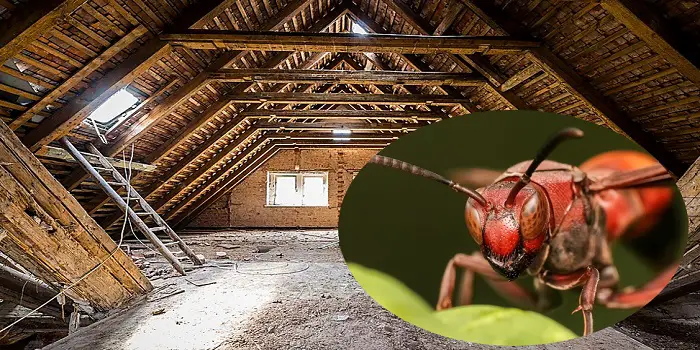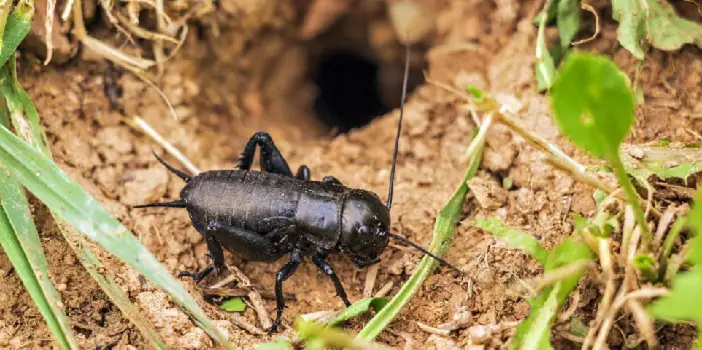
Spring is a time of blooming trees, flowers, and plants, along with the arrival of warmer weather.
Unfortunately, spring is also the time in which the ticks also arrive and can be of considerable annoyance.
For many, the sight of a tick is enough to cause panic.
However, what you see may not be a tick at all.
There are many bugs that look like ticks but are not members of the tick family.
Knowing the difference will help save you some anxiety and grief.
Plus, it should be noted that ticks are quite challenging to see when not on your skin.
Chances are, if you see a bug that looks like a tick on grass, leaves, or some other natural surface, it is probably not a tick.
Even so, six common bugs look like ticks but are not.
1- Ash Plant Bug
If you venture into Manitoba, you may find the leaves of the trees filled with a minor, black bug that looks a lot like a tick.
These are Ash Plant Bugs, and they feast on the leaves of trees.
Their small, round shape and mostly black coloring give them an appearance that can be easily mistaken for a tick.
However, unlike ticks, they have no interest in biting or feeding on humans.
They are vegetarians that only love to eat the leaves from the trees.
You can tell the difference mostly due to having six legs and not eight legs.
2- Brown Marmorated Stink Bugs
The stink bug is one of the more unusual types of creatures.
This one is mostly found in North America and gets its name from its color, shape, and foul odor when it is squished.
The good news is that they have no interest in humans or animals for that matter.
But they love to eat fruits and vegetables, which makes them a considerable threat to vegetation.
Adult stink bugs are noted for their shield-like body shape, so they bear little resemblance to a tick.
However, before they mature, the young stink bugs have the familiar rounded appearance of a tick.
Because they have yet to develop their flat, shield-like appearance, they could be mistaken for a tick.
The one way you can be sure it is not a tick is that the Brown Marmorated Stink Bug has only six legs like most insects, not the eight legs of a tick.
3- Clover Mites
Like ticks, clover mites are members of the arachnid family.
This means that they have the eight legs commonly associated with ticks.
They are also small and shaped like a tick, so it is easy to understand why they can be mistaken for ticks.
However, there is one important difference that will let you tell the difference.
Clover mites have a distinctive bright red appearance.
No tick has such coloring, instantly making the clover mite stand out.
Well, if you could see the clover mites, they tend to be as small as a pinhead.
This means that clover mites are much smaller than the average tick.
4- Harlequin Cabbage Bug
This interesting bug should be quite familiar to those who have gardens.
Especially gardens that grow cabbage because, as the name implies, these bugs love to feast on cabbage.
The Harlequin Cabbage Bug is a familiar sight for gardeners during spring and summer.
These bugs have the general shape and coloring of a tick, although they look more like ladybugs in terms of their appearance despite the dark coloring.
But the most noticeable difference is that the cabbage bug only has six legs, like most insects.
While ticks have eight legs, like most arachnids.
The cabbage bug presents no danger to you unless you are cabbage or a tasty member of the plant family.
Although you may want to shoo them from your garden, they present no danger to you, your family, or your pets.
5- Head Louse
Louse or lice, as they are sometimes called, were quite the problem for many thousands of years.
The head louse feasts on the scalp while hiding in the hair.
This creates an itchy situation that only gets worse the longer the head louse is present.
The louse, much like a tick, will also feed on the blood that they suck from the scalp.
While the head louse should be treated quickly, it is not a member of the tick family.
Despite being a parasite like a tick, the head louse only has six legs as it is a member of the insect family, not arachnids as with the tick.
Although head louse does not carry diseases, they are quite a nuisance and should be treated immediately as they can spread quickly.
6- Poplar Weevils
Small, black, and shaped much like a tick, the poplar weevil is a beetle with no interest in you.
Instead, they present a great danger to poplar trees, hence the name.
While on very rare occasions they may bite, they do not carry any diseases, and thus any reaction you might have to a bite is at worst an allergic one.
The main difference between ticks and the weevils is the long snout or nose on the weevil, which gives it away as not being a tick.
Plus, they only have six legs, not the eight legs that are common with ticks.
Remember that ticks are not insects but arachnids or spiders that always have eight legs.
Plus, you are most likely to see a poplar weevil in flight as they have wings.
Ticks do not have wings, so if you see a poplar weevil flying around, rest assured that it has no interest in you unless you look like a poplar tree.
Few Other Bugs that are Mistaken for Ticks
Apart from the most common ones that I have discussed above, there are a few more insects, flies, and bugs that resemble ticks.
While they may resemble when viewed through naked eyes, you can tell them apart when you view them through a magnifying glass or under a microscope.
These include:
- Deer bloodsucker: It May look like a tick, but it can fly
- Pseudoscorpions: These look alike but have pinchers
- Swallow bug: Unlike ticks, they have six shorter legs
- Booklice bug: Look like young ticks but are lighter in color
- Bed bugs: They look alike, but their bite is different from the bite of ticks
The Conclusion
For the most part, the tick is distinctive from bugs of a similar shape or size because of its eight legs.
If you see a bug and are unsure if it is a tick, check the number of legs first.
If you see eight, you probably have a tick. If not, you are facing an insect that most likely has no interest in you.
Share the post "6 Common Bugs That Look Like Ticks – But Aren’t"

Welcome to ProShieldPest.com. I am Tina Jones. I have been working as a pest removal professional in Winslow, Arizona lately. At present, I love to spend my time with my family as a retiree.
Here I share all my knowledge and experiences to help people understand better how they can stop pests at their homes without actually killing them. Hopefully, the information you will find here will help in safeguarding your home! You can check more about me here.




